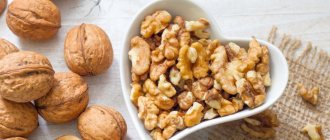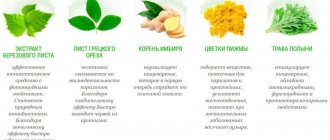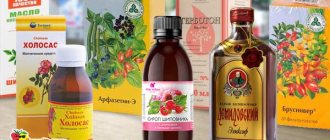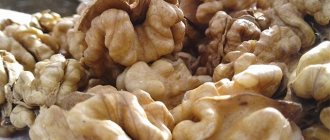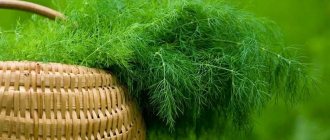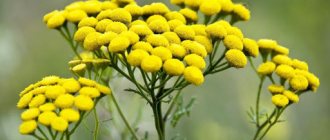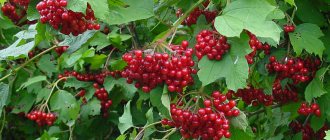Stagnation of bile occurs in diseases of the liver, gallbladder, and bile ducts. The consequences of cholestasis are diseases of the digestive system, stone formation in the gall bladder, and decreased immune status. Complex therapy necessarily includes medications and diet. A choleretic herbal mixture has a good effect. An infusion based on it is convenient to prepare at home. The attending physician must choose the appropriate remedy; if there are contraindications, analogues are prescribed. Compliance with the dosage will help avoid side effects.
Pharmacodynamics and pharmacokinetics
Pharmacodynamics
The plant components of the collection increase appetite, normalize gastrointestinal , and have choleretic, antispasmodic and anti-inflammatory effects.
Immortelle flowers are classic plant choleretics - they have a pronounced choleretic effect. This effect is due to the presence of sterols and flavonoids , tannins and essential oil provide an anti-inflammatory and bactericidal effect, and bitterness regulates stomach function.
Coriander fruits contain large quantities of essential oil and fatty acids, which enhance the secretion of gastrointestinal , resulting in increased appetite. They also have antihemorrhoidal and antiseptic effects. The infusion has an antispasmodic and carminative effect, and increases bile secretion.
The most important component of peppermint leaf oil is menthol, which causes increased peristalsis in spastic colitis and has an antiseptic and choleretic effect. It is used for inflammation of the digestive organs, stomach ulcers , vomiting, flatulence , and diarrhea .
quinagolide content , yarrow herb has a choleretic effect. Chamazulene and essential oil provide anti-inflammatory, bactericidal effects, flavonoids and essential oils provide antispasmodic effects, and the bitter alkaloid achillein enhances the secretion of gastric juice.
Pharmacokinetics
Data not provided.
Review Reviews
According to reviews, choleretic herbal mixtures cause severe allergies such as urticaria in predisposed individuals when taking even small doses.
Judging by the reviews, the choleretic preparation Fitohepatol 3 is well tolerated and quickly relieves pain in the right hypochondrium. Many are attracted by the environmental friendliness of the product and its natural composition of plant ingredients.
Long-term use of choleretic preparation 3 on an empty stomach, according to reviews, causes heartburn and sour belching. Most indicate an unpleasant bitter taste.
Analogs
Level 4 ATC code matches: Berberine
Oxafenamide
Cyqualon
Olimethine
Choleretic collection No. 3
Dandelion roots
Holosas
Gepabene
Holenzym
Holagol
Artichol
Holyver
Artichoke extract
Flamin
Tykveol
Odeston
Tanacehol
Allohol
Celandine grass , Rose hips , Calendula flowers , Corn silk , Choleretic mixtures No. 1 and 3 , Kholosas , Holagogum , Curepar , Holagol , Gepabene , Flamin , Fumetere .
Instructions for use of phytohepatol No. 2
According to the instructions for using choleretic collection 2, infusion is recommended to be drunk three times during the day, 1/2 cup, approximately 35-40 minutes before breakfast, lunch and dinner. The resulting solution must be shaken before use.
Rules for brewing the choleretic collection Phytohepatol 2 according to the instructions:
- 1 tablespoon, which corresponds to approximately four grams of the collection, is poured into an enamel-coated bowl.
- Add 1 cup of water to the herb mixture, brought to a boil.
- Heat for 15-20 minutes using a water bath, remove the collection from the burner and leave for about 40 minutes.
- The liquid is cleaned through gauze and, after squeezing out the remaining sediment, poured into a separate container.
The resulting infusion is topped up with boiled water to the final volume of one glass.
Cholecystitis
Reviews of choleretic collection No. 2
Herbal medicine is widely used in the treatment of gastrointestinal in complex treatment, and in case of unexpressed symptoms, as monotherapy. This collection is also called Phytohepatol , which confirms its targeted effect on the liver and biliary system.
Patients respond positively to this herbal collection, which includes well-known herbs whose effects have been well studied. Briefly, the reviews look like this - “not expensive”, “completely satisfied with it”, “really helps”, “good natural remedy”, “effective”. It is also prescribed to children with functional disorders of the digestive system. Among the shortcomings is the bitter taste.
- “... I am constantly worried about heaviness in the stomach, nausea and poor appetite. After an examination, including an ultrasound, the doctor recommended a diet and this herbal mixture, which turned out to be effective. I really liked the decoction, but I couldn’t bother and brew it according to the rules for a long time - I only took it for 10 days.”
- “... The pediatrician prescribed it for my school-aged son; an ultrasound revealed stagnation of bile. I was bothered by nausea, belching and bitterness in the mouth. I took it for 2 weeks and everything returned to normal, but the doctor said that you must take food at the same time so that there is no stagnation of bile.”
- “...Very effective, I use it all the time.”
- “... I suffer from biliary dyskinesia, and if there is an error in nutrition, I often experience nausea, heaviness in the hypochondrium and even bitterness in the mouth. In such situations, I brew a decoction and drink it for 2 weeks. Very good".
- “... It helps, I brew it for my husband - he has cholecystitis.”
- “... The taste is not very pleasant, but for the sake of health you can tolerate it.”
How to drink phytohepatol No. 3
After preparation, in accordance with all points of the instructions for use of the choleretic collection Phytohepatol 3, the resulting infusion of herbs is taken in half or a third of the volume of a glass three times during the day, 35-40 minutes before meals. Drinking choleretic collection 3, like No. 2, is recommended from 2 weeks to a month.
The prepared infusion is stored in the refrigerator for up to 48 hours.
When brewing bags with a filter, the resulting infusion should be taken, like the choleretic tea sold in bulk, in half or a full glass. The course of treatment is designed to be taken daily for up to one month.
Can it be taken together with other choleretic medications?
Complex treatment of congestion is aimed at removing bile and includes traditional medicines, choleretic preparations, and a therapeutic diet (table No. 5).
Medicines have a narrowly targeted mechanism of action, for example:
- stimulate the production of bile by the liver (Allohol, Cholamin);
- enhance the functioning of the gallbladder (Xylitol, Holosas);
- dilate the bile ducts, relieve spasms (Papaverine, No-shpa, Besalol).
The herbs included in medicinal mixtures 1-3, on the contrary, have a wide spectrum of action and enhance the effectiveness of each other and the tablets. They have a minimum of side effects and contraindications, therefore they are an important component of therapy for bile stagnation. However, you must inform your doctor about taking any medications.
Side effects
Heartburn is one of the side effects of choleretic preparation
Often, patients note that after taking such herbal drinks, they experience heartburn. Sometimes severe allergic reactions were observed, in the form of urticaria and itching.
Overdose
If the recommended dosage is significantly exceeded, symptoms such as persistent nausea, vomiting, diarrhea, increased blood pressure and headaches may appear.
Contraindications
Although these are natural herbal preparations, they are not harmless.
Choleretic preparations should not be used for the following ailments:
- duodenal ulcer;
- allergy to pollen (hay fever);
- cirrhosis;
- individual intolerance;
- cholelithiasis;
- exacerbation of pancreatitis;
- stomach ulcer;
- appendicitis;
- calculous cholecystitis.
Any of these diseases excludes the use of herbal drinks and requires consultation with a doctor.
During pregnancy
During the period of bearing a child, you should not drink such decoctions. The doctor can prescribe them only in the most extreme cases.
Harm and contraindications
Despite their high therapeutic effectiveness, these drugs have contraindications. For example, the herbs they contain can cause an allergic reaction or a rise in blood pressure, which is dangerous for hypertensive patients. The fees are not used for certain diseases:
- exacerbation of pancreatitis;
- viral hepatitis;
- cirrhosis and liver neoplasms;
- ulcer of the stomach and duodenum.
Gastroenterologists do not recommend taking the preparations for children under 12 years of age. Pregnant and lactating women are prescribed them with caution, only in cases of urgent need.
Long-term use and non-compliance with the prescribed dosage can cause diarrhea, nausea, heartburn, especially in people suffering from chronic gastrointestinal diseases. In these cases, the choleretic preparation is stopped, and the doctor prescribes other drugs.
For what diseases are choleretic preparations prescribed?
Bile is an important digestive secretion produced by liver cells. Accumulating in the gallbladder, it enters the duodenum through special ducts (biliary system), where it contributes to:
- the breakdown of lipids coming from the stomach as part of digested food;
- activation of pancreatic enzymes;
- strengthening the activity of the muscles of the small intestine;
- production of digestive hormones.
The reasons for the decrease in the flow of bile into the intestines, as a rule, are decreased motility (dyskinesia) of the gallbladder, its inflection, and dysfunction of the bile ducts. Hepatitis, pancreatitis, and peptic ulcers lead to decreased bile production.
With stagnation of bile (cholestasis):
- Serious pathologies arise - pancreatitis, cholelithiasis;
- blood cholesterol levels increase;
- Dysbacteriosis progresses;
- stool is constantly disrupted;
- general intoxication of the body is possible;
- immunity decreases.
Choleretic herbal preparations help increase the release of bile into the intestines. You can make them yourself, but ready-made pharmacy ones are more convenient and effective. Treatment with choleretic complexes helps with diseases:
- cholecystitis;
- chronic hepatitis;
- cholangitis;
- dyskinesia of the gallbladder and excretory tract;
- Giardiasis
The drug is also used after cholecystectomy (removal of the gallbladder).
Choleretic collection 1, 2 or 3: which one to choose
The composition of the collection includes medicinal herbs that prevent bile stagnation. As a rule, they are part of a complex treatment, but they are also recommended for the prevention of pathologies of the liver and biliary system.
Before taking any choleretic drugs, you should definitely seek advice from a specialist, since uncontrolled use of choleretic drugs can lead to very negative consequences.
Ready-made pharmaceutical preparations have not only a choleretic, but also an anti-inflammatory and antispasmodic effect.
№1
It includes the following components:
- Mint. The leaves are rich in tannins, vitamins, amino acids, and essential oils. This makes mint an excellent antiseptic and antispasmodic. Due to its choleretic and analgesic effect, mint is used in the treatment of organs of the biliary system, to destroy gallstones.
- Coriander (seeds). Polyunsaturated fatty acids, vitamins A, C, E, PP, group B, essential oils in the plant give it anti-inflammatory and choleretic properties.
- Immortelle. In folk medicine, its inflorescences are used to treat liver diseases. The flowers contain vitamins, flavonoids, essential oils, and bitterness. It improves the motility of the bile ducts and bladder, has an analgesic effect, and improves bile secretion.
- Three-leaf watch. Its leaves are rich in phytoglycosides, flavonoids, polyunsaturated fatty acids, and pectin. Used as a choleretic, anti-inflammatory and laxative.
Collection No. 1 is recommended for liver diseases, biliary tract dysfunction, pancreatitis.
The drug is contraindicated in case of individual intolerance, stomach and duodenal ulcers, stone formation. Available in cardboard packs or filter bags.
№2
This collection contains the same components, but instead of the three-leaf watch, yarrow herb is included. This plant:
- normalizes bile production;
- relieves spasms of the gallbladder and ducts;
- has an anti-inflammatory effect;
- reduces pain;
- increases immunity.
Instructions for use of choleretic collection 2 contain a description of its effect on the body (anti-inflammatory, antispasmodic, choleretic) and a list of pathologies for which it is used:
- chronic hepatitis;
- dysfunction of the bile ducts and bladder;
- intestinal disorders due to stagnation of bile;
- condition after cholecystectomy.
The drug should not be taken in case of individual intolerance or cholelithiasis. Violating the dosage can cause heartburn.
They produce 30-100 g of crushed herbs in cardboard packs and are sold without a prescription.
№3
The collection contains yarrow and mint, as well as other effective components:
- chamomile, which soothes, reduces pain, spasms, and is effective for stagnation of bile;
- calendula flowers have anti-inflammatory, analgesic, antispasmodic effects;
- Tansy flowers have a pronounced antimicrobial and choleretic effect.
Instructions for use of choleretic collection 3 recommend its use in complex therapy for:
- bile duct dyskinesia;
- chronic hepatitis;
- chronic cholecystitis.
The third collection is contraindicated in case of allergies to these choleretic herbs, certain types of cholecystitis, pregnancy and breastfeeding. It should not be given to children under 12 years of age. Uncontrolled use may cause heartburn.
For those who do not have time to wait and carry out all the manipulations, bags of herbs can be brewed like tea.
Available in cardboard packs of 35 and 50 g, and disposable bags of 2 g in boxes of 10 and 20 pcs. Available without a prescription.
Each of these fees has contraindications and side effects, so the choice of the appropriate one must be left to the attending physician.

